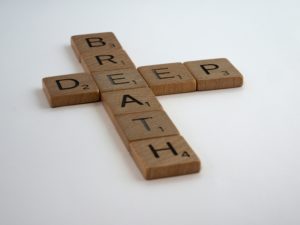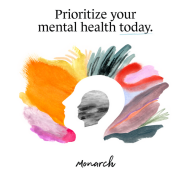Self-regulation and Mindfulness
As explored in our last blog, the ability to cope with the many challenges of life, whether big or small, and our emotional responses to them, has a relationship with something called self-regulation. Remember, self-regulation is the ability to manage one’s emotions, behavior and body movement when faced with difficult situations.
Below is a follow-up article by my colleague, Joel Bennett, M.Ed., which explores the potential for improving our self-regulation through several mindfulness-based interventions. Joel shares how you can add to your mental health toolbox and positively increase your capacity for self-regulation in several simple, easy to apply ways.
Find yourself, and be that!

Licensed Clinical Social Worker
EMDR Certified Therapist
112 W. New York Avenue, Suite 205
DeLand, FL 32720
Self-regulation and Mindfulness
By Joel A. Bennett, M.Ed.
 Often, through unwritten or unspoken norms, we perceive that our value and worth is tied with action and production. While it is better to think ahead, make previsions for the unknown, and get the laundry done, an often-overlooked aspect of self is quiet mindfulness.
Often, through unwritten or unspoken norms, we perceive that our value and worth is tied with action and production. While it is better to think ahead, make previsions for the unknown, and get the laundry done, an often-overlooked aspect of self is quiet mindfulness.
Is mindfulness the property of Eastern thought and religions? Not according to a study that looked at the correlation between different interventions and their impact on self-regulation (Pandey et al, 2018). Remember, self-regulation includes focusing and maintaining attention, regulating emotion and stress response among many other descriptors (Blair and Raver, 2015, Pandey et al, 2018). With constant action and minimal or unintentional awareness of what “is”, our ability to control our emotions and stress responses suffers.
What is mindfulness? Mindfulness can be defined as practicing awareness of what is, internally as well as externally (Pandey et al, 2018). Okay, but what framework would support me in learning to perform mindfulness activities? I will give three examples of what mindfulness activities may look like.
Mindful Breaths
When you control your breathing, you can control many parts of how you experience life. When you sit up straight, you allow your nerves and air way to work as they were designed. Breathe in through your nose slowly. Feel the air filling your lungs and then pushing down into your belly. Sit with your belly full for 4 seconds and then let the air escape slowly out of your mouth. We will call this 4-4-4 breathing. 4 counts in, 4 counts hold, and 4 counts exhale. Go ahead, pause and practice right now. (Sit straight, with feet flat on the floor, count out loud or in your head. Think: inhale, hold and exhale.) Build up your tolerance for how long you can sustain this purposeful breathing activity. Most individuals struggle doing this for more than a minute at first. The Navy Seals do a similar activity they call squared breathing. They count to 5 and they add the empty lungs to the end of the activity just described. Pick a time during the day and practice your mindful breathing. Prevention and habit have been shown to impact emotion and stress responses (Galla & Duckworth 2015).
Foghorn
 Another breath activity is called the Foghorn. This is an interesting option for those that are not self-conscious or are able to have a few minutes in a location no one is able to hear you. Sit up straight or stand and correct your posture, place your fingers on your neck just below your jaw, and feel the vibrations as you exhale through your mouth, supported by your diaphragm. Make a low rumble type noise like a foghorn. This works with your mouth open or closed. This activity engages the vagus nerve and helps to calm emotions.
Another breath activity is called the Foghorn. This is an interesting option for those that are not self-conscious or are able to have a few minutes in a location no one is able to hear you. Sit up straight or stand and correct your posture, place your fingers on your neck just below your jaw, and feel the vibrations as you exhale through your mouth, supported by your diaphragm. Make a low rumble type noise like a foghorn. This works with your mouth open or closed. This activity engages the vagus nerve and helps to calm emotions.
Planted Seed
 Make your spine straight again. In this activity you will choose an external quote or phrase that you believe to be true towards you. You might think of the words of a friend sharing their appreciation for your kindness and generosity. For someone with a spiritual frame of reference an example might be a Biblical promise such as Deuteronomy 31:6 which says, “Be strong and courageous, do not be afraid. The Lord your God will never leave you nor forsake you”. Now pick one of the words or words that attracts your attention, such as kind, generous, courageous, or never leave you and imagine it is a little seed. Imagine planting that little seed inside your heart. Do the mindful breaths and imagine it growing and growing inside of you. Sit with the seed. Imagine those words seeping into your bone marrow.
Make your spine straight again. In this activity you will choose an external quote or phrase that you believe to be true towards you. You might think of the words of a friend sharing their appreciation for your kindness and generosity. For someone with a spiritual frame of reference an example might be a Biblical promise such as Deuteronomy 31:6 which says, “Be strong and courageous, do not be afraid. The Lord your God will never leave you nor forsake you”. Now pick one of the words or words that attracts your attention, such as kind, generous, courageous, or never leave you and imagine it is a little seed. Imagine planting that little seed inside your heart. Do the mindful breaths and imagine it growing and growing inside of you. Sit with the seed. Imagine those words seeping into your bone marrow.
Remember, the phrase you choose must be something that you truly believe.
Build the Habit
There are myriad frameworks to practice mindfulness. Don’t allow the sheer volume of options overwhelm you. Choose one or two and begin to make it a daily habit. By so doing, you will improve your body’s ability to regulate emotions and stress responses.
Joel Bennett, M.Ed.
Blair, C., & Raver, C. C. (2015). School Readiness and Self-Regulation: A Developmental Psychobiological Approach. Annual Review of Psychology, 66, 711-731.
Galla, B. M., & Duckworth, A. L. (2015). More than resisting temptation: Beneficial habits mediate the relationship between self-control and positive life outcomes. Journal of Personality and Social Psychology. 109(3), 508-525. Doi:10.1037/pspp0000026
Pandey, A., Hale, D., Das, S., Goddings, A. L., Blakemore, S. J., & Viner, R. M., (2018). Effectiveness of Universal Self-regulation – Based Interventions in Children and Adolescents: A Systematic Review and Meta-analysis. JAMA Pediatrics, 172(6), 566-575. https://doi-org.wgu.idm.oclc.org/10.1001/jamadediatrics.2018.0232
